
Do you know ancient yogis believed that we (humans) have only a limited number of breath counts in our lifetime (with approx 16 breaths/minute, 672,768,000 breaths for an average age of 80 years)! They utilized this fact to extend the life span of humans by deriving breathing techniques as Pranayama.
Being a Pranayama beginner it can be difficult to differentiate between a regular vs. Pranayama breathing. To know what pranayama actually is and how to get started for quick benefits, this article is specially prepared for persons who want tips, guidelines, and recommendations needed to begin pranayama.
But before trying any of these pranayamas, A beginner is highly recommended to follow these step-by-step practicing instructions covered in this infographic.
Pranayama for Beginners [Infographics]

1. Surya Bhedna Pranayama
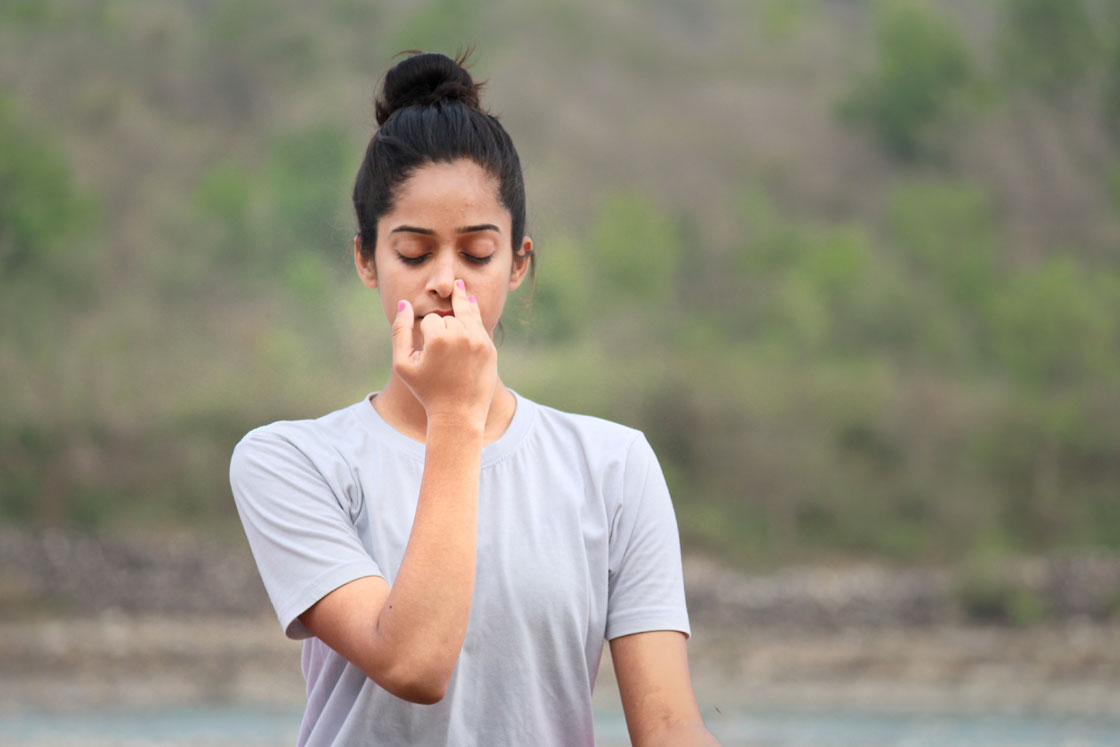
In the yogic tradition, it’s believed right nostril is the entrance of sun (hot) energy in the body so inhaling through the right nostril is a way to accumulate warmness in the body. Thus in this technique, we inhale through the right nostril only & exhale through the left side.
It’s very easy to perform Surya Bhedana technique. You just need to make mrigi mudra with fingers and close the left nostril with ring finger. Then simply inhale through the right side & exhale through left. Again close the left nostril with ring finger, inhale through right side & exhale through left. Repeat in this process for a few rounds.
Want to know how Surya Bhedana pranayama works? Here is the mechanism, detail instructions, & benefits of Surya bhedana pranayama.
Why Surya Bhedna Pranayama is Best for a beginner?
- Surya bhedana pranayama lets a beginner experience the power of single nostril over both nostrils.
- A person with a digestion problem can relief by practicing Surya bhedana pranayama as it stimulates Manipura chakra.
Beginners Tips
- Maintain a breathing ratio of 1:2 in inhale vs. exhale in beginning. Then introduce retention at a ratio of 1:4:2, after one month of practice.
- Practice Surya bhedana either on an empty stomach or a minimum of 4-5 hours after a heavy meal.
2. Ujjayi Pranayama
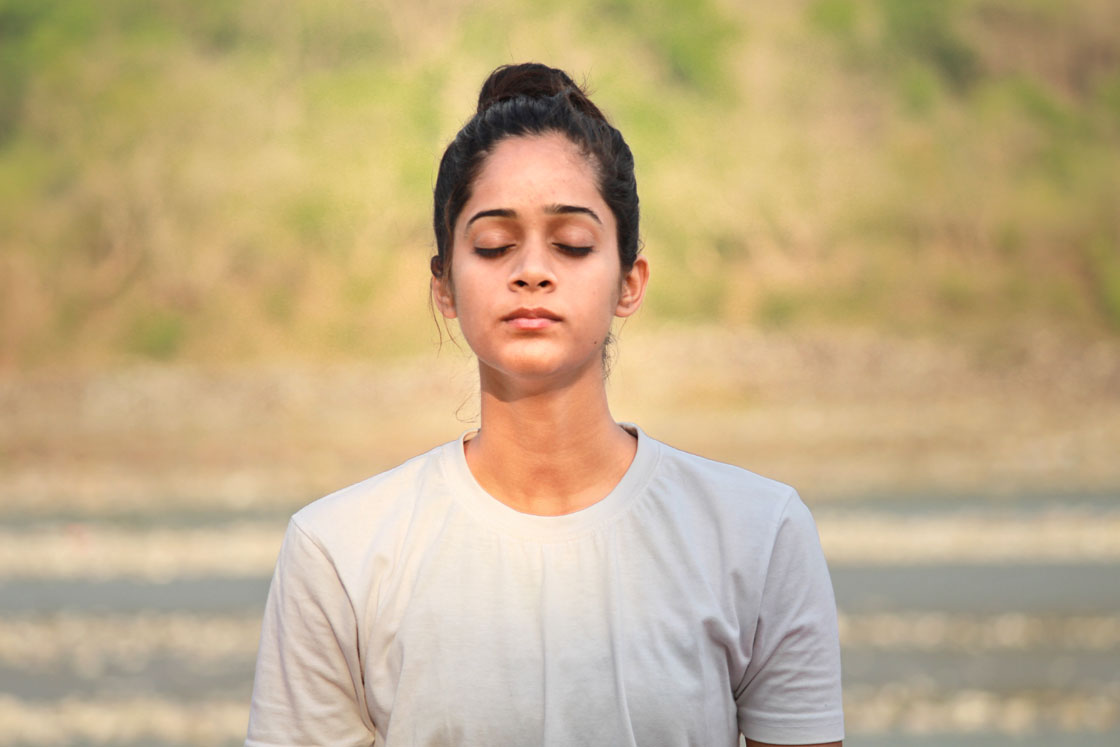
Ujjayi is another easy breathing technique for a beginner in which, while breathing, a soothing sound has to produce through the back of the throat. This sound is very similar to the sound produced when we place a seashell near to the ear.
To begin Ujjayi Pranayama, sit comfortably in a cross-legged posture & breath gently through nostrils a few rounds. Then begin contracting your back of throat muscles on both inhalation & exhalation. On contracting throat, feel the sensation of sound in muscles with every inhale & exhale.
Didn’t understand the procedure? See here: detailed instructions of ujjayi with different bandhas (lock), precautions & contraindications.
Why Ujjayi Breathing is Best for a beginner?
- Ujjayi pranayama doesn’t ask a great understanding of breath regulation. All that is expected from a beginner is to bring attention to the throat muscles & else everything will go automatically.
- Stimulating throat muscles by breathing opens the door of the throat chakra that further is very important in the yogic journey of a beginner.
Tips for Beginners
- To engage & experience throat contraction in this breathing, imagine like you fogging up a mirror.
- Common mistakes that beginners do is, they start breathing through mouth in try of producing sound. Mouth breathing can produce an adverse effect.
- As a beginner, you should not try ujjayi with Bandhas because beginners normally tighten throat too firmly.
3. Sitali Pranayama

Another breathing technique a beginner can try with almost zero efforts is sitali pranayama. The name of this pranayama derived after the Hindi word ‘sital‘ which means cool or something which soothing effect.
To perform sitali pranayama, all you need to curl up your tongue in a tube-like form & suck the air in. After complete inhale, exhale out through nostrils. Air that enters through moist tongue cools the body & mind.
Why Sitali Breathing is Best for a beginner?
- Breathing could be the easiest way to cool your body in summer when it’s about Sitali pranayama.
- If you as a beginner want to experience some glimpse of meditation, then sitali pranayama is best practice to calm your mind. Research has shown, sitali pranayama increases the alpha, delta, and theta waves power that calms the mind.
Tips for Beginners
- If you are unable to roll your tongue, bring your flat tongue near the mouth and then just purse your lips to make a small “O” shape with your mouth.
- The ratio of inhale to exhale is 4:6 for beginners.
Want to know more information about Sitali Pranayama? Here are the detailed practicing guide, benefits, precautions & contraindications of sitali Pranayama.
4. Kapalbhati Pranayama
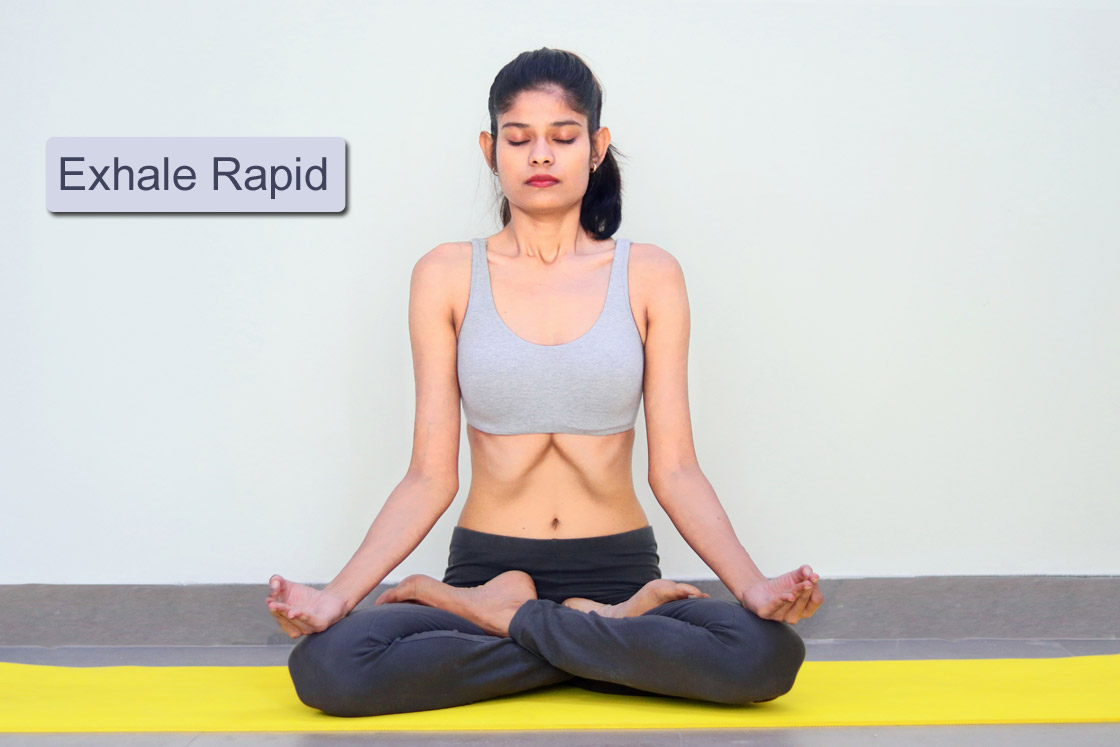
This breathing technique teaches beginners to use the power of exhalation rather than inhale. As the name suggests, kapalbhati pranayama makes seeker’s forehead (kapal) shine (bhati).
However, the technique of kapalbhati requires a forced exhalation produced after a rapid contraction of the abdominal wall, a beginner can perform it with almost zero force. To perform kapalbhati, simply sit in padmasana & focus on the breath leaving at the nostrils. Now start exhaling with stroke through the diaphragm and inhalation will come automatically.
Didn’t understand kapalbhati properly? Here’s the beginner’s guide to Kapalbhati pranayama with step, benefits & precautions.
Tips for Beginners
- Beginners aren’t able to contract the abdominal muscles properly. To make it happen, place one hand over the stomach and pretend like you’re pushing abdomen back every time you exhale.
- For a beginner, 3 rounds of 20 breaths are sufficient in the beginning.
- If you’ll perform kapalbhati with over force, you can have dizziness feeling. So at least to one month, practice kapalbhati with small strokes.
5. Nadi Shodhan Pranayama
To clear any kind of obstacles in Nadis, a beginner can begin yogic breathing with Nadi Shodhan Pranayama. It’s an easy breathing technique that clears Nadis & let Prana (vital life force) flow effortlessly without any blockages.
To begin with Nadi Shodhana Pranayama, sit comfortably on the mat & take a few deep breaths in and out. Close your right nostril with thumb & take a deep breath in through the left side. At the end of inhalation, close your left nostril with ring finger & expel the air out through the right side. it’s the one round, repeat in the same manner for a few more rounds.
Why Nadi Shodhan is Best for a beginner?
- The very pre-requisite for any other pranayama to work efficiently, is the purification of Nadis. This breathing technique is very effective in purification of Nadis, hence, a beginner should practice it before any other pranayama.
- Nadi Shodhan establishes an equilibrium between the right & left hemispheres of the brain so that the body can work at its fullest capacity.
Tips for Beginners
- Don’t voluntarily hold the breath at the end of inhalation in the beginning days. Simply inhale from one nostril & exhale from the opposite.
- Keep Inhale vs. exhale ratio constant (1:1) throughout the whole practice for at least 15 days. Then work on a 1:2 ratio of inhaling vs. exhale.
- In the initial days (up to 30 days), don’t perform more than 15 minutes.
- For a better concentration, focus on inhale & exhale while doing soundless breathing. With practice, later one can chant a seed mantra simultaneously for concentration.
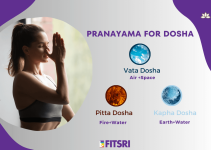

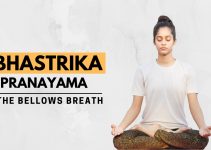


Namaste Ashish
I hope you are well.
I love your website: https://fitsri.com/articles/pranayama-for-beginners
It’s nice and simple and advises on the safety and environmental aspects of Pranayama with some lovely practices shown.
I am a yoga teacher myself and am currently providing some training to health professionals on pranayama practice, in the UK.
I would like to start with 5 simple techniques, and will guide people through these techniques mentioned on your website. I wished to check that it will be acceptable for me to inform people involved in the training of your website?
I look forward to hearing from you.
Best Wishes
Denise
Hey Denise, thanks for your valuable comment! I am glad you liked the pranayama safety tips and advice I mentioned in this article.
You are welcome to use these techniques in your training.
Hi Ashish,
I have been practicing traditional yoga for about a year since the lockdown, but finding it difficult to maintain my focus.
I’m looking for an alternative solution and came across Pranayama for beginners. i have read the information as well as watched the videos, but have you published any books, or other reading materials that I can obtain please?
Thanks for showing interest Carlton but I have not published any of such books or reading materials as of now. The yoga domain is so vast I am still in the learning phase. I will do share the information with you in the near future if I come up with anything like this.
Hi Denise,
You indicated that you provide classes on yoga. I am a beginner and have been practicing for nearly a year since and during the lockdown, with the objective to improve my mental wellbeing.
You mentioned that you provide classes to health professionals. Are they any classes in the UK that I can attend please? I believe that attending actual classes, rather than self-teaching, will help improve my focus.
Best Wishes
Carlton
The content & design of infographics is very impressive. Will definitely emulate the mentioned pranayama tips. Should pranayama be performed before or after the asana practice? Thanks
Traditionally, Pranayama is designed to practice only after the asana practice. But for now, If you’re a beginner, you can practice some breathing exercises (like a few rounds of kapalbhati) before to calm the mind & get a better focus during asana practice.